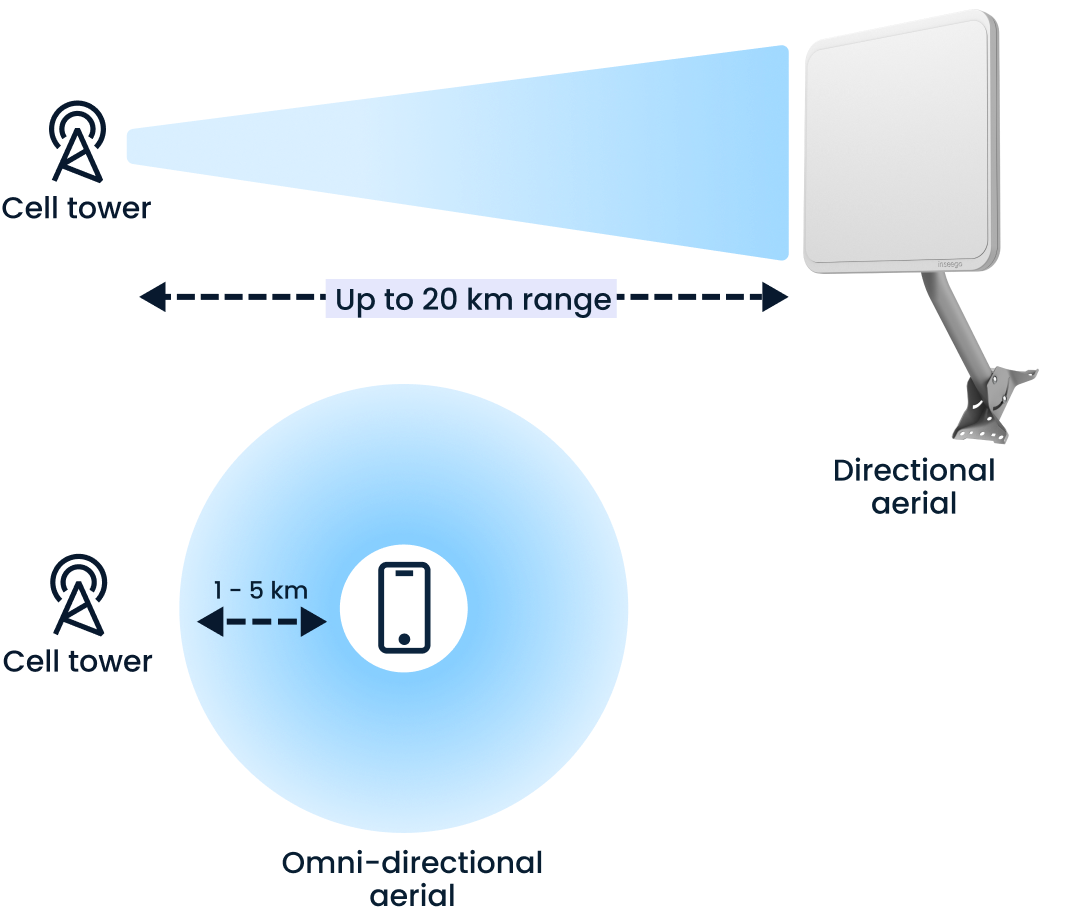Also in this category
View more in Connectivity for IoTConnectivity for IoT
Edge computing is here and this is why you should care

Edge computing might sound like something from the future but it’s been around for a while now, and it’s only going to get bigger. Research firm Gartner has predicted that by 2025, more than 70% of data generated by enterprises will be processed outside of traditional, centralized data centers (such as cloud computing) — and this is where the edge computing model comes in. It’s no wonder that the IDC has reported that global spending on edge infrastructure and edge computing solutions is expected to top $176 billion in 2022, an increase of 14.8% over 2021.
What is edge computing?
Edge computing is a type of network architecture that puts the capabilities of centralized data servers closer to the user, functionality like data storage or processing.
So, instead of sending raw data from the edge (where the user, or device, is accessing the internet — or any network) all the way back to a centralized server (referred to as backhauling), it can be processed a lot closer, reducing the amount of time it takes for the user, or device, to get a response. This is referred to as low latency, and for some applications and technologies, such as self-driving cars, and video surveillance it’s an absolute must.
Edge computing is:
- A decentralized network, storage, and compute architecture (or ecosystem)
- Edge nodes (connected network hardware) are positioned closer to the user or mobile device
- Edge nodes can include cloudlets (small scale data servers), micro data centers, routers and gateways
- A system designed to bring more computing power to where end users (or IoT devices) are located instead of requiring data to always flow to a central data server
- It’s growth is linked to the increase of resource-intensive applications, as well as the widespread adoption and initiatives around 5G networks and the Internet of Things (IoT)
- Sometimes described as fog computing, or bringing the cloud to the ground
Solving the shortfalls of edge computing
Inseego has been an industry leader in decentralized networks for many years, and has addressed some of the downsides of edge computing, notably for security, providing connectivity at the edge of a network, and building in redundancy for situations where an edge node fails.
We also help system administrators manage the rising number of network edge devices through cloud management software.
Security — Edge computing devices are at risk of being hacked, allowing private data to be accessed, or corporate operations sabotaged. In part, this is due to the sheer number of edge devices and the difficulty managing them, including making sure software updates are deployed and devices no longer in use are removed from the network. Inseego Connect helps by giving IT administrators a single screen view of all devices that can be managed from anywhere, including installing updates or disabling a rogue device.
Redundancy — While it’s great to be able to delegate the workloads of a centralized data center to edge nodes for processing, it does create potential points of failure that need to be planned for. With SD-WAN, you have a lot of network orchestration options to develop failover rules, should an edge node fail, increasing overall resiliency. This can include alternative options for storing data and handover to a nearby node.
Edge device management — The massive growth in the number of connected devices can make management a challenge. Juniper Research reported that in 2020 there were 35 billion connected devices, and this will grow to 84 billion by 2024, with industrial IoT accounting for around 60 billion of those devices. Managing these devices will become increasingly important for both end-of-life management, and security risk mitigation. Products like Inseego Connect allow sys admins to manage all their devices from any location remotely.
Explore Inseego's cloud management solutionsWhat are the benefits of edge computing?
While some industries are already well along in applying the benefits of edge computing, other types of businesses are only now coming on board, since it required the maturing of related technologies such as 5G networks and SD-WAN.
Now more mainstream information-based businesses are able to start benefiting from edge computing.
Benefits of edge computing include:
- Better (lower) latency and faster network speeds for improved artificial intelligence, more intensive algorithms and advanced machine learning
- Improved data privacy by processing it on-premises, instead of the public cloud
- Lower bandwidth costs by reducing the volume of data backhauled to centralized cloud providers such as Amazon AWS or Microsoft Azure cloud services
- Greater network reliability at the edge, unaffected by outages upstream
- Faster scalability with easier provisioning of smaller edge servers, micro data centers, and node devices, positioned at edge locations
Edge computing — Next steps
Edge computing is rapidly expanding, offering transformative benefits like reduced latency, enhanced data privacy, and increased network reliability. As the demand for resource-intensive applications, 5G networks, and IoT devices grows, edge computing is becoming increasingly vital for businesses across various sectors.
However, effectively managing the complexity and security of decentralized networks requires adept solutions. Inseego has been at the forefront, providing robust tools to address the challenges of security, redundancy, and device management at the edge.
To optimize your network infrastructure and leverage these advancements, explore how Inseego Connect's cloud management solutions, plus our fixed wireless devices, can help streamline your operations.
Learn more about our cloud management softwareIs your current internet connection meeting your business needs?
Even though your current connection is meeting your needs 5G cellular is also an affordable way to provide a back-up internet connection if your primary connection goes down.
Inseego outdoor antennas can support dual SIM cards for multi-carrier failover and ultimate reliability.
How is your connection letting you down?
What is your current connection type?
Do you get cell signal at your business?
Who is your current network provider
We've got a solution
A 5G cellular connection is a great way provide extra resilience to you business. This means if your primary connection goes down, any part of your business that relies on connectivity can carry on uninterrupted.
Even if you get a weak or almost no signal from your mobile phone, you can still get a great connection thanks to the powerful, directional antenna inside the FW2000.
5G cellular plans are affordable, with internet options from $50 - $100 per month, from the leading network providers.
What are your details?
How can we contact you?
Thanks, we've got your request
We’re excited to share our 5G connectivity solutions with you.
Check your email now for a confirmation message. Then a member of our team will send a personalised message within 1 business day to arrange a suitable time to have an in-depth one on one consultation.

5G Outdoor FW2000



Did you know?


5G Outdoor FW2000


Did you know?
Our hugely experienced team are located across the USA.
We’ll connect you with the Inseego team member nearest to you.
What happens next?
We aim to contact you via email within 1 business day to arrange a suitable to time for a detailed discussion of your needs.











